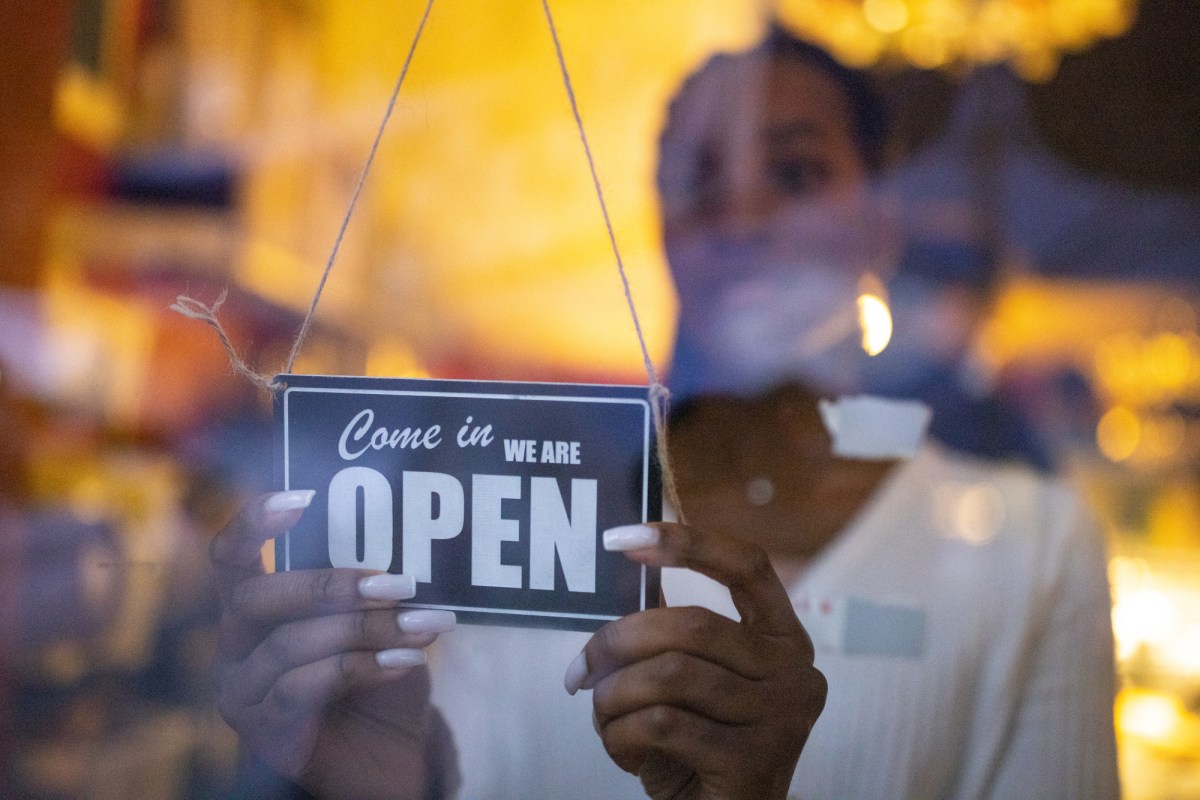When the pandemic hit in March 2020, the Long Island real estate market, along with many industries, came to a screeching halt. Brokers in New York could no longer show properties — but those in Connecticut could.
“We had people who wanted to buy homes and we weren’t allowed to have in-person showings,” said Deirdre O’Connell, CEO of Daniel Gale Sotheby’s International Realty. “We pivoted to virtual showings.”
Realtors sold many houses sight unseen as demand soared, and when they were allowed to do in-person showings again in late June 2020, business boomed.
“The floodgates opened. Our agents ran for 12 months straight,” O’Connell said. “There was so much business to be done.”
A year later, the company sees not a recession but a banner year in its rearview mirror, along with strong demand as the economy recovers.
“2020 was the most successful year we’ve ever had,” O’Connell said. “And this has been the most successful first half of the year we’ve ever had.”
The past year has been topsy-turvy, with some industries on a roll and many such as restaurants struggling. But as the economy reopens, rising job numbers and lower unemployment show a region making a comeback across many industries.
Restrictions have loosened although variants remain, but the economy is recovering, as rising cost of living hits residents and companies sort out whether and how to blend remote and in-person work.
“I think it’s a mixed bag,” said Jeffrey Reynolds, CEO of Family and Children’s Association, a large nonprofit health and human services organization. “Those who were doing OK are doing slightly better. Those who were struggling are struggling more than in the past.”
Unemployment in both Nassau and Suffolk rose to 12.9 percent in June 2020, falling to 5 percent by this June, well below the 6.1 percent national average.
Nassau and Suffolk added more than 100,000 jobs from June 2020 to June 2021 in what Bruce Bergman, a regional economist with the U.S. Bureau of Labor Statistics (BLS), called “the largest over-the-year gain recorded for any June since the start of the series in 1990.”
Nassau and Suffolk from June 2019 to June 2020, however, lost 228,200 jobs. Shital Patel, a regional economist with the New York State Department of Labor, said the region remains at 119,500, or 10.2 percent, below pre-pandemic levels of June 2019.
“Long Island has largely kept pace with the greater New York area in terms of overall job growth during this recovery period,” Patel said. “As economic activity resumed, Long Island’s private sector regained a large portion of jobs lost.”
While many economic indicators paint a positive picture, others point to an ongoing emotional toll amid variants that threaten a recovery.
“The anxiety, depression, and drug use that existed pre-pandemic has been multiplied exponentially,” Reynolds said. “Drug and alcohol use has increased.”
Nassau and Suffolk’s 104,600 job gain translates into 9.1 percent growth, edging ahead of 8.9 percent in the New York-Newark-Jersey City metropolitan area. Patel said “leisure and hospitality added the bulk of the jobs,” more than 30,000, for 37.5 percent growth, including 23,900 in accommodations and food services.
“A lot of high-wage jobs tend to be in the five boroughs, people who work somewhere else to get higher salaries,” Reynolds said. “Many jobs on Long Island are service-oriented jobs like restaurant staff or not-for-profits or construction.”
Retail added 17,200 jobs and healthcare and social assistance added 14,700 jobs. The arts, entertainment and recreation; transportation and warehousing; and professional and technical services sectors all added at least 5,000 jobs each.
Compensation has not been keeping pace with inflation, increasing pressure. New York State Department of Labor Chief Regional Economist Martin Kohli said wages and salaries in the New York metropolitan area rose 2.3 percent over the year, while consumer prices rose 4.1 percent. Wages and salaries rose 3.5 percent nationwide, also outpacing Long Island.
The BLS’ Bergman said, “The numbers are affected by shifts in industry and occupational employment as have occurred over the past year.”
Average weekly wages for the fourth quarter of 2020 in Nassau were $1,456 and $1,454 in Suffolk, well above the U.S. average of $1,339. Fast food and counter workers got $14.03 per hour in the New York metropolitan area, compared to $11.80 nationwide, while accountants got $50.83 compared to $39.26 nationwide, according to BLS data.
Working remotely became a bigger part of the norm and technology sometimes increased convenience and lowered costs. Telehealth lets services be provided more easily and, often, cheaply.
“That makes all the difference in the world, particularly for low-income families who may have to take three buses to get to treatment,” Reynolds said.
More government funding gives nonprofits resources to serve a growing need, he added. “There’s more awareness about mental health issues,” Reynolds said. “No matter how well adjusted you were before Covid, the average person got a taste of what some people struggle with on a daily basis.”
Affluent residents are acquiring summer homes that are sometimes being used far beyond the summer. “They’re still buying. Everybody you can imagine. People in rentals. First-time home buyers,” O’Connell said, noting high-end Gold Coast market estates have “not had a market like this in 10 years.”
She said virtual tours and 3D photography will remain as buyers expect technology to offer tours before they go in person.
“Before they get in their car, they’re going to want to experience houses in different ways,” O’Connell said. “They’re going to want real video.”
The fall likely will bring a shift from outdoors back indoors, which Reynolds said likely will bring more pressure related to the pandemic.
“I would expect September is going to be really challenging,” he said. “The uncertainty of where Covid is going has added a lot of stress.”
For more business coverage visit longislandpress.com/category/business
Sign up for Long Island Press’ email newsletters here. Sign up for home delivery of Long Island Press here. Sign up for discounts by becoming a Long Island Press community partner here.
































